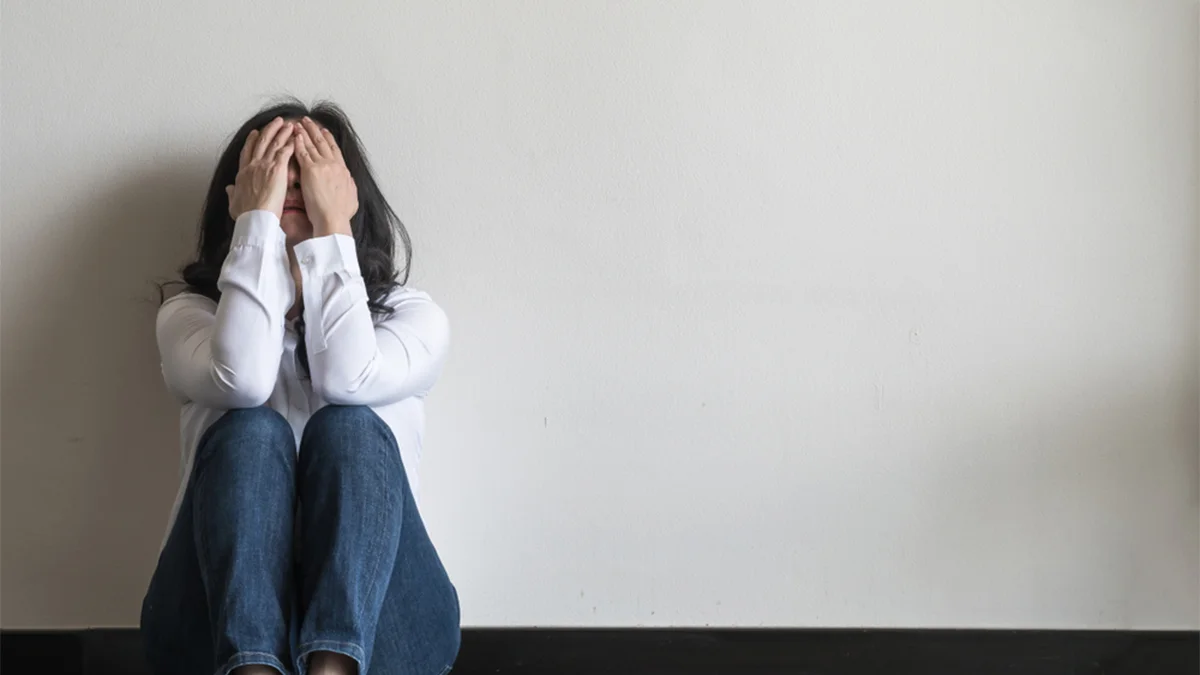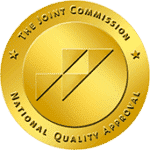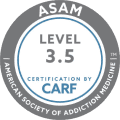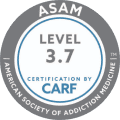Bipolar II disorder is a mental health disorder characterized by periods of depressive episodes alternating with hypomanic episodes, which are a milder form of the full-blown manic episodes seen in bipolar I disorder.
This condition can profoundly impact a person’s daily functioning, relationships, and overall quality of life. Fortunately, there are various treatments available to help manage this condition effectively. Read on to learn more about this complex mental disorder.
Key Takeaways
Bipolar II disorder, a complex mental health condition, impacts many people in the United States. Here is what this article covers:
- Bipolar II involves alternating episodes of depression and hypomania, impacting daily activities and quality of life.
- Bipolar II can stem from a combination of different factors and shows up in the form of depressive and hypomanic episodes.
- Accurate diagnosis and treatment by a mental health professional are essential for managing the condition effectively.
The Haven Detox-New England offers comprehensive and personalized mental health care options. Contact us at (844) 933-4145 for details.
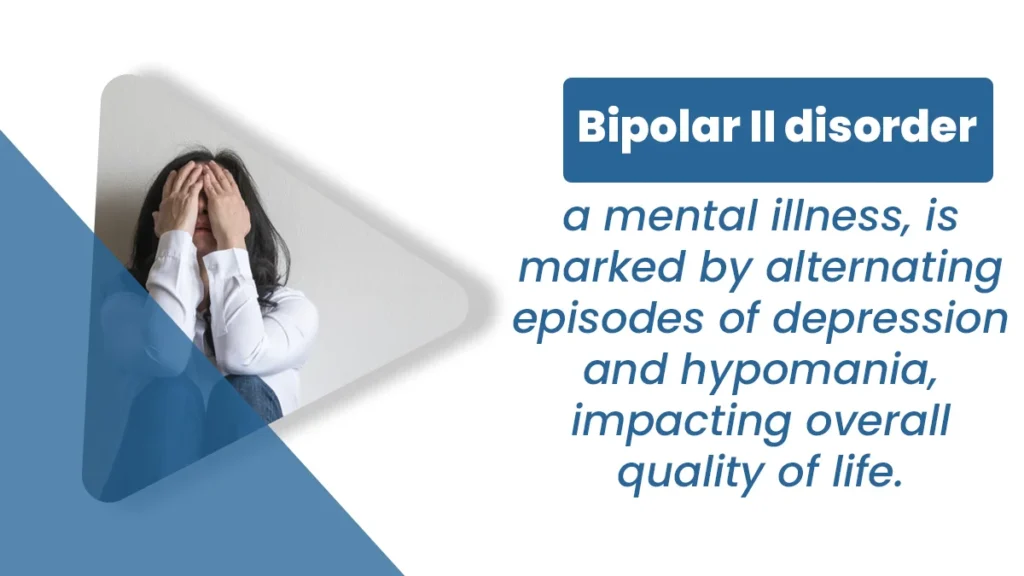
Introduction to Bipolar II Disorder
Bipolar II disorder is a mood disorder characterized by cyclic shifts between depressive and hypomanic episodes. While similar to bipolar I disorder, individuals with bipolar II experience hypomanic episodes rather than full-blown manic episodes. These episodes can significantly impact daily functioning and overall quality of life.
Here’s an overview of the symptoms associated with hypomanic and depressive episodes in bipolar II disorder:
Hypomanic Episode Symptoms
Hypomanic episodes in bipolar II disorder manifest as:
- Increased Energy: During hypomania, individuals often experience high energy levels. They may feel unusually upbeat, active, and restless.
- Decreased Need for Sleep: People in a hypomanic state may feel like they need less sleep than usual and may function well on only a few hours of sleep per night.
- Increased Talkativeness: Hypomanic individuals often exhibit rapid speech, talkativeness, and a tendency to jump from one topic to another.
- Grandiosity or Inflated Self-Esteem: They may have exaggerated self-confidence or grandiosity. This can manifest as unrealistic beliefs in one’s abilities, talents, or importance.
- Racing Thoughts: Thoughts may race through the mind, making concentrating or focusing on tasks hard.
- Impulsivity: Hypomanic episodes are often accompanied by impulsive behaviors, such as reckless spending, engaging in risky activities, or making impulsive decisions without considering consequences.
- Increased Goal-Directed Activity: Individuals may engage in numerous activities simultaneously, taking on multiple projects or tasks without feeling overwhelmed.
Depressive Episode Symptoms
In bipolar II disorder, depressive symptoms show up as:
- Persistent Sadness: Depressive episodes are characterized by a pervasive feeling of sadness, emptiness, or hopelessness that lasts for most of the day, nearly every day.
- Loss of Interest or Pleasure: The loss of interest or pleasure in activities, once enjoyed, is a hallmark symptom of depression. Hobbies, socializing, and other activities may no longer hold any appeal.
- Changes in Appetite or Weight: Depression can cause significant changes in appetite, resulting in either weight loss or weight gain. Some individuals may experience changes in cravings or eating patterns.
- Sleep Disturbances: Insomnia, marked by difficulty falling asleep or staying asleep, or hypersomnia, excessive sleeping, are common symptoms of depression.
- Fatigue or Loss of Energy: Even simpler tasks may feel exhausting, and individuals may experience persistent fatigue or lack of energy.
- Feelings of Worthlessness or Guilt: Individuals may experience intense feelings of worthlessness, guilt, or self-blame, even over minor mistakes or perceived shortcomings.
- Difficulty Concentrating or Making Decisions: Cognitive symptoms such as difficulty concentrating, indecisiveness, or memory problems are common during depressive episodes.
- Thoughts of Death or Suicidal Ideation: Consistent suicidal thoughts or even suicide attempts may occur.
Remember, these symptoms of hypomania and depressive episodes can vary in intensity and duration from person to person. Proper diagnosis by mental health professionals is essential.
The Differences Between Bipolar I and Bipolar II Disorder
Bipolar disorder, a manic-depressive illness, is marked by extreme mood swings and manifests in various forms, with bipolar I and bipolar II being the most common types. While they share similarities, there are distinct differences between the two.
Nature of Mood Episodes
In bipolar I disorder, individuals experience full-blown episodes of mania, often accompanied by depressive episodes. On the other hand, bipolar II disorder is characterized by hypomanic episodes, which are less severe than full mania, along with depressive episodes.
Severity of Mania
Manic episodes in bipolar I disorder are typically more severe, often leading to hospital care due to their intensity and potential for reckless and erratic behavior. In bipolar II disorder, hypomanic episodes are less extreme and may even be perceived as periods of increased productivity or elevated mood.
Duration of Episodes
Manic episodes in bipolar I disorder last at least seven days, while depressive episodes can persist for two weeks or more. In bipolar II disorder, hypomanic episodes last at least four days, and depressive episodes typically last for longer durations.
Impairment in Functioning
The impairment in functioning during manic episodes is more pronounced in bipolar I disorder, often resulting in significant disruptions to work, relationships, and daily life. In bipolar II disorder, the impairment during hypomanic episodes is less severe, but depressive episodes can still cause major difficulties in functioning.
Remember, either type of bipolar disorder can have a significant impact on daily functioning, interpersonal relationships, and overall quality of life. Therefore, professional help is essential for an accurate diagnosis and proper treatment.
The Causes and Risk Factors of Bipolar II Disorder
While the exact cause of bipolar disorder is not fully understood, several factors are believed to contribute to its onset. Here are some of the possible causes and risk factors associated with bipolar II disorder:
Genetics
Genetic predisposition plays a significant part in the development of bipolar II disorder. Individuals with a family history of bipolar disorder are at a higher risk of developing the condition themselves.
Biological Factors
Imbalances in neurotransmitters, such as serotonin, dopamine, and norepinephrine, are implicated in bipolar II disorder. Brain structure and function changes, including prefrontal cortex and limbic system abnormalities, may also contribute to its development.
Psychological Factors
Psychological factors, including stress, trauma, and unresolved emotional issues, can exacerbate symptoms of bipolar II disorder. Additionally, personality traits such as impulsivity and perfectionism may increase susceptibility to the condition.
Environmental Triggers
Environmental factors, such as significant life changes, traumatic events, or chronic stressors, can trigger mood episodes in individuals with bipolar II disorder. These triggers can lead to disruptions in the delicate balance of brain chemistry, leading to episodes of depression or hypomania.
Medical Conditions
Certain medical conditions, such as thyroid disorders or neurological conditions, may elevate the risk of developing bipolar II disorder or exacerbate existing symptoms.
Substance Abuse
Substance abuse, including alcohol, illegal drugs, recreational drugs, and prescription medicines, can worsen symptoms of bipolar II disorder and interfere with treatment effectiveness. Substance abuse can also trigger mood episodes and increase the severity of the condition.
Remember, bipolar II disorder is a complex condition with multiple contributing factors, and individual experiences may vary.
Diagnosis Process for Bipolar II Disorder
The diagnosis process for bipolar II disorder typically involves various steps to ensure accurate assessment and appropriate treatment. Here’s a breakdown of each step:
Initial Assessment
The diagnosis process typically begins with an initial assessment conducted by a healthcare provider. This assessment involves gathering information about the individual’s symptoms, medical history, and family history of mental health conditions.
Diagnostic Criteria
Healthcare providers use established diagnostic criteria, such as those outlined in the Diagnostic and Statistical Manual of Mental Disorders (DSM-5), to determine if the individual meets the criteria for bipolar II disorder.
Physical Examination and Laboratory Tests
A physical checkup and laboratory tests, such as blood tests, may be conducted to rule out any underlying medical conditions or substance use contributing to the individual’s symptoms.
Mood Tracking
Mood tracking, such as keeping a mood journal or using digital tools, can help individuals and healthcare providers monitor mood fluctuations over time, providing valuable information for diagnosis and treatment planning.
Psychological Evaluation
A mental health professional may conduct a psychological evaluation to assess the individual’s overall mental health, including their thoughts, emotions, and behaviors.
Collateral Information
Collateral information from family members or close friends may be gathered to provide additional insights into the individual’s symptoms and functioning.
Differential Diagnosis
Healthcare providers consider other possible diagnoses that may present with similar symptoms, such as major depressive disorder (MDD), anxiety disorders, cyclothymic disorder, or substance use disorders (SUDs).
Treatment Planning
Based on the diagnosis, healthcare providers collaborate with the individual to develop a personalized treatment plan that may include medication, therapy, lifestyle changes, and support services.
Follow-up and Monitoring
Regular follow-up appointments and monitoring are vital to track the individual’s response to treatment, adjust the treatment plan as needed, and ensure ongoing support and care.
By following this comprehensive diagnosis process, healthcare providers can accurately identify bipolar II disorder and provide appropriate care and support.
Treatment Options for Bipolar II Disorder
Bipolar II disorder requires a comprehensive treatment approach for effective management. Here are the key treatment options:
Medication
Medication is a cornerstone of treatment for bipolar II disorder. Mood stabilizers, such as lithium or anticonvulsants, are the most common types of medications prescribed by doctors to help regulate mood changes and prevent manic or depressive episodes. Additionally, antidepressants or antipsychotic medications may be used to target specific symptoms.
Psychotherapy
Psychotherapy, or talk therapy, can be a valuable tool for bipolar patients. Cognitive behavioral therapy (CBT), interpersonal therapy (IPT), and psychoeducation can help individuals learn coping skills, identify triggers, and develop strategies for managing mood symptoms.
Lifestyle Changes and Coping Mechanisms
Sel-care plays a crucial role in managing symptoms of bipolar disorder. Maintaining a regular sleep schedule, exercising daily, and avoiding alcohol and drugs can help stabilize mood. Stress management techniques such as mindfulness meditation or relaxation exercises are also beneficial.
Support Groups
Joining a mental health support group can provide valuable emotional support, encouragement, and practical advice. Connecting with others who understand what it’s like to live with the condition can help individuals feel less alone and more empowered to manage their bipolar symptoms effectively.
By combining these treatment options, individuals with bipolar II disorder can effectively manage their severe symptoms and lead fulfilling lives.
Frequently Asked Questions (FAQ)
Can a person with bipolar 2 live a normal life?
Yes, with proper treatment and support, many people with bipolar 2 disorder can lead fulfilling lives. By managing symptoms effectively through medication, therapy, and lifestyle adjustments, they can achieve stability and pursue their goals.
How do you diagnose bipolar 2 disorder?
Bipolar 2 disorder is diagnosed through a comprehensive assessment that includes evaluating symptoms, medical history, and mood patterns. Diagnostic criteria from the DSM-5 are used to confirm the presence of the disorder.
What is it like living with bipolar II?
Living with bipolar II disorder can be challenging due to severe mood swings between depression and hypomania. It involves navigating symptoms affecting everyday life, relationships, and overall well-being, but treatment can achieve stability.
What are the symptoms of bipolar 2 disorder?
Symptoms of bipolar II disorder include depressive episodes marked by sadness and fatigue, as well as hypomanic episodes characterized by elevated mood and increased energy. Intense mood changes can impact daily functioning and relationships.
The Haven Detox-New England: Where Healing Begins
Struggling with bipolar disorder can be overwhelming, but you’re not alone. At The Haven Detox-New England, we support you on your journey to a healthier life.
Our safe and supportive residential rehab program provides evidence-based therapies. Expert medication management. Dual diagnosis support and holistic approaches tailored to your individual needs. Don’t wait to reach out. Call us at (844) 933-4145 and take the first step toward a better life today.
Verify Insurance
Let’s get you or a loved one help with a few simple steps.
-
Mental Illness Treatment
- Am I Depressed? Coping with the Blues
- Anxiety Disorders: Exploring the Different Types
- Anxiety No More: Your Guide To Effective Treatment
- Anxious Minds: A Dive Into Different Anxiety Disorders
- Bipolar Disorder: Signs and Symptoms
- Bipolar II Disorder: Symptoms, Causes, and Treatments
- Blue Mood: A Closer Look at Depression
- Genes to Environment: Causes of Depression
- Healing Hearts: Approaches to Treating Depression
- Inside the Mind: Exploring the Depths of PTSD
- Navigating Emotional Trauma in Adulthood
- What is Bipolar I Disorder: Strategies for Stability

